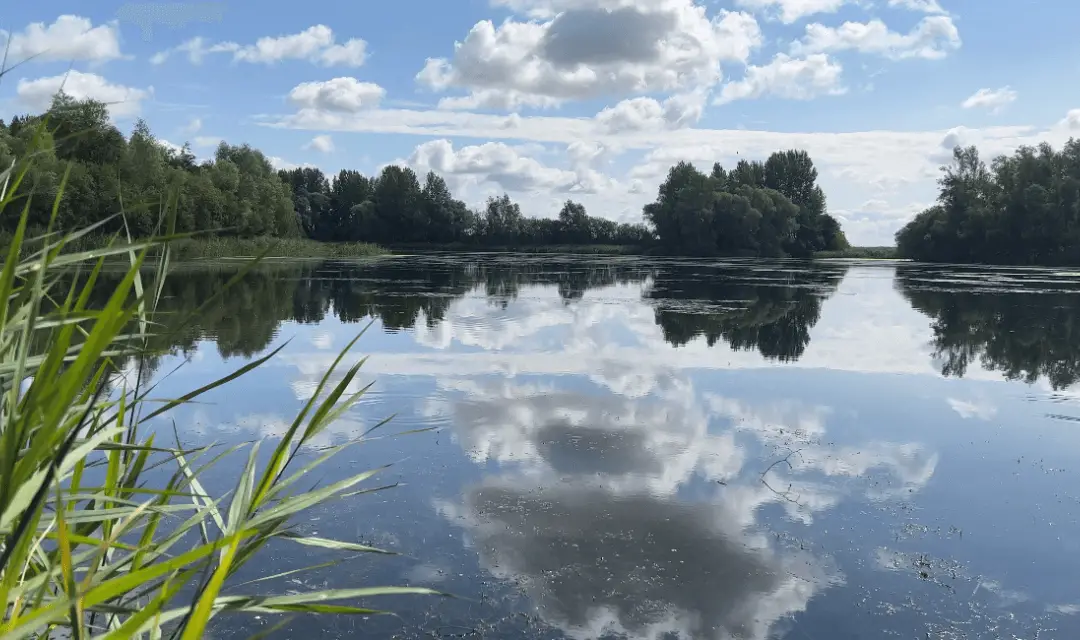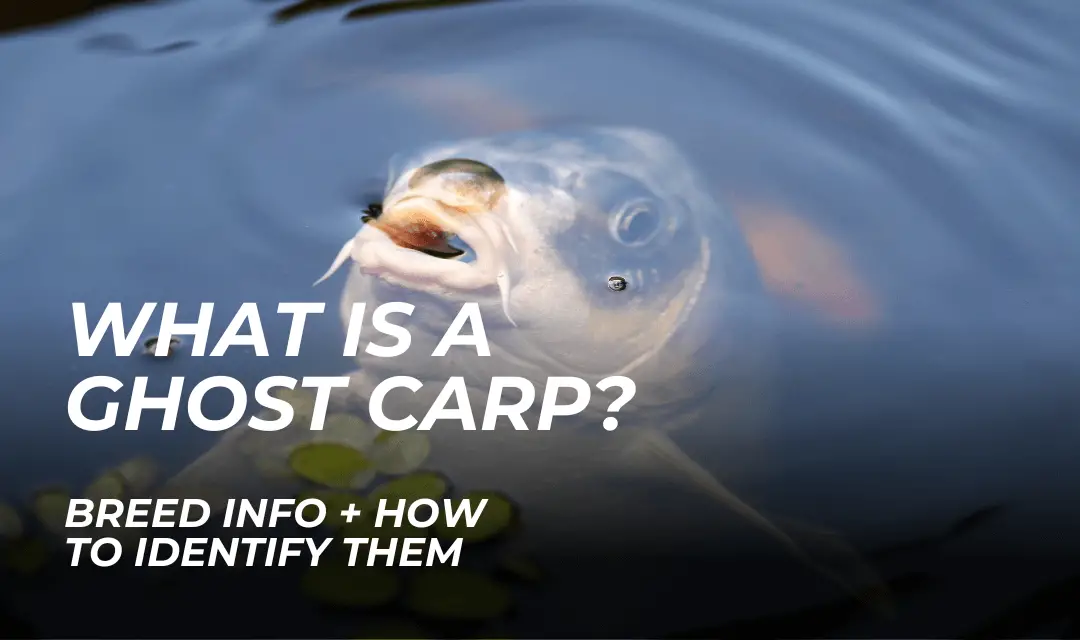Carp are fascinating fish known for their varied diet and ability to adapt to different environments. As an omnivorous species, they feed on a wide range of food sources, from plants to small aquatic creatures.
Aside from what we as anglers feed them, carp have access to a wide variety of food items in their natural surroundings.
Typically, you’ll find carp munching on insects, aquatic vegetation, crustaceans, worms, and even algae. Carp are opportunistic and inquisitive feeders, which means they’ll consume just about anything they can fit into their mouths. That’s why they can be caught on a whole manner of baits, including imitation baits.
Basics of Carp Diet
Carp are omnivorous fish, meaning they consume both plant and animal matter. When you think of a carp in their natural environment, their diet primarily consists of organic detritus, aquatic insects, and vegetation.
Whilst these items will exist in most lakes that we fish, if it is a stocked venue then it’s likely the carp will favour manufactured baits like carp pellets and boilies. Stocked carp have typically been reared on high-protein pellets since birth, so more often than not they associate this as a natural food source.
What Do Carp Eat?
Natural Foods and Small Aquatic Creatures
Carp are quite versatile when it comes to their diet, and they enjoy a wide variety of natural foods and small aquatic creatures. In this section, we will explore some of these tasty morsels that carp fancy.
Bloodworm
One of the most common foods in a carp’s diet is bloodworm. These tiny, red worms are rich in nutrients, making them an irresistible treat for carp. If you’re lucky enough to find an area full of bloodworm, you can be sure that carp will be nearby.
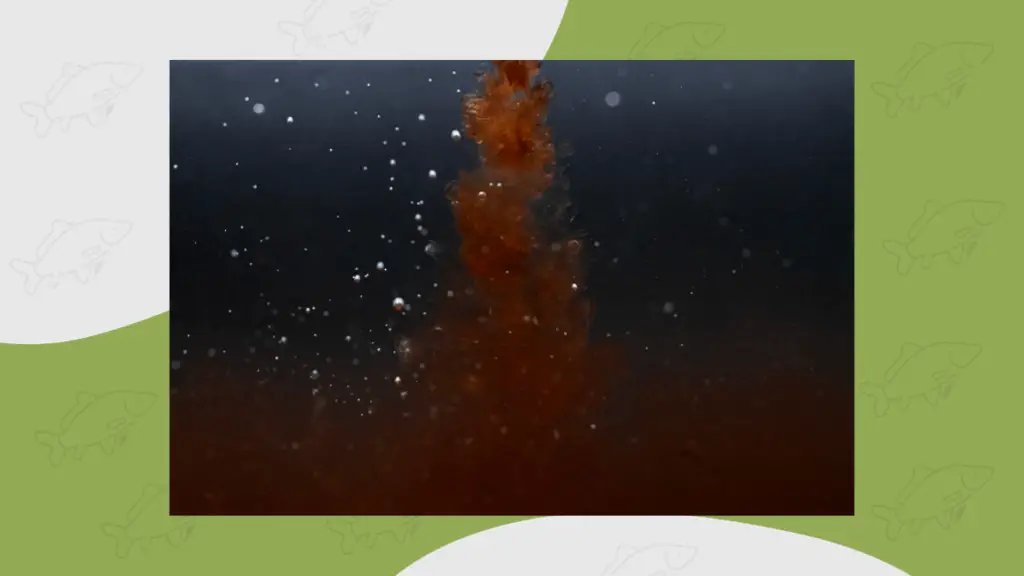
It’s not uncommon for you to reel in with bloodworm wrapped around the hook. That’s a sure sign that your fishing on a good spot!
Daphnia
Daphnia, also known as water fleas, are another food source that carp love to eat. These tiny crustaceans are an excellent source of protein, and they are often found in abundance in freshwater environments. Carp love to eat them as they move through the sub-surface layers.
When present, they represent a great opportunity to fish with zig rigs, especially if you can mimic them at a similar depth int he water column.
Mayfly Larvae
Carp also love to munch on mayfly larvae, which are commonly found in freshwater ecosystems in the UK. These larvae are a favourite for carp, along with nymphs and phantom midge larvae.
As a natural bait, they’re not a constant, so when a hatch goes off carp are often seen gauging on them. A clear sign of a hatch underway is small birds such as swallows swooping down on the surface of the lake. Like the carp, they’re picking up the mayfly whilst them can.
From a fishing perspective, this is an awesome time to flick some zigs out.
Swan Mussels
Swan mussels are a variation of freshwater mussel, and can grow to quite large sizes in freshwater environments in the UK. They represent an excellent food source for carp, and are a clear indicator of good water quality in a venue.
You’ll often know if they are present where you are fishing; you’ll see large mussels in the margins or experience cut offs every now and then from sharp shells.
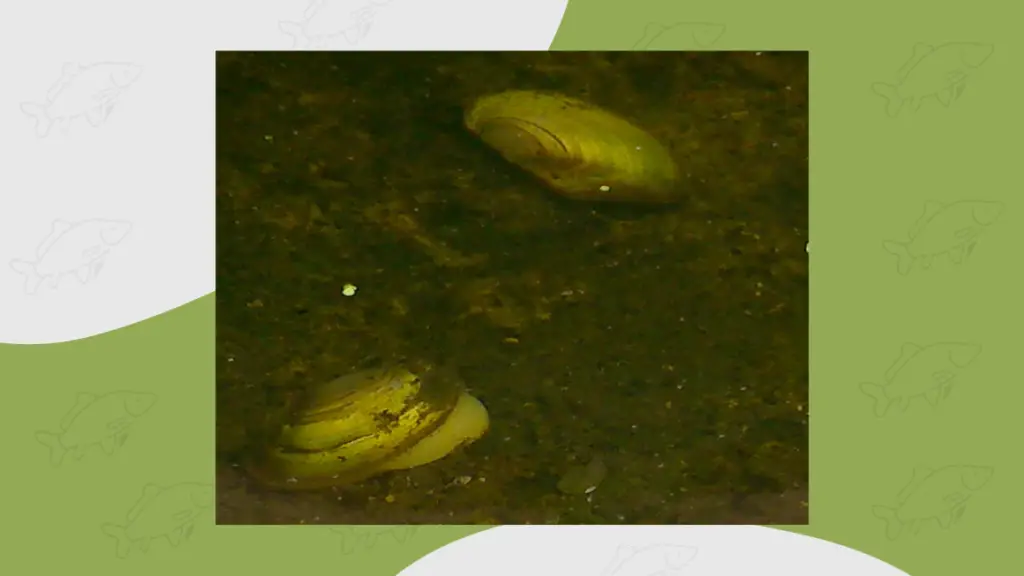
Water Snails
Water snails are often in abundance in UK venues and like swan mussels, they’re an excellent indication of water quality. Carp love to eat them; they’re crunchy, packed full of protein and are often an easy to find snack as they stick to rock formations under the water.
Crayfish
Crayfish are in abundance throughout the UK since their introduction into our waters in the 1970s.
Whilst they are seen as an invasive species, and provide tricky fishing situations for us anglers, carp love them. You wouldn’t think that carp would be eating crayfish when you look at them; tough outer shells and sharp claws. – That’s a lot to contend with.
But during Spring, a crayfish’ defences are weakened as they shed their outer shells. This essentially gives them a softer consistency for a short duration, at which point carp find them much easier to digest.
Manufactured Baits
Given how popular carp fishing is and how busy venues are, carp now find themselves with a whole host of manufactured baits available to them. In many cases, venue owners prefer the use of these as they are protein packed, yielding larger fish and therefore higher profits.
Boilies
Carp love boilies, but they are far from a natural food source. That being said, they have been well-manufactured to provide all of the nutrients that a carp needs for a balanced diet.
The fact that carp are caught on them so often shows that they understand their health benefits. They’re typically packed full of protein, fishmeals and other ingredients that carp find irresistible.
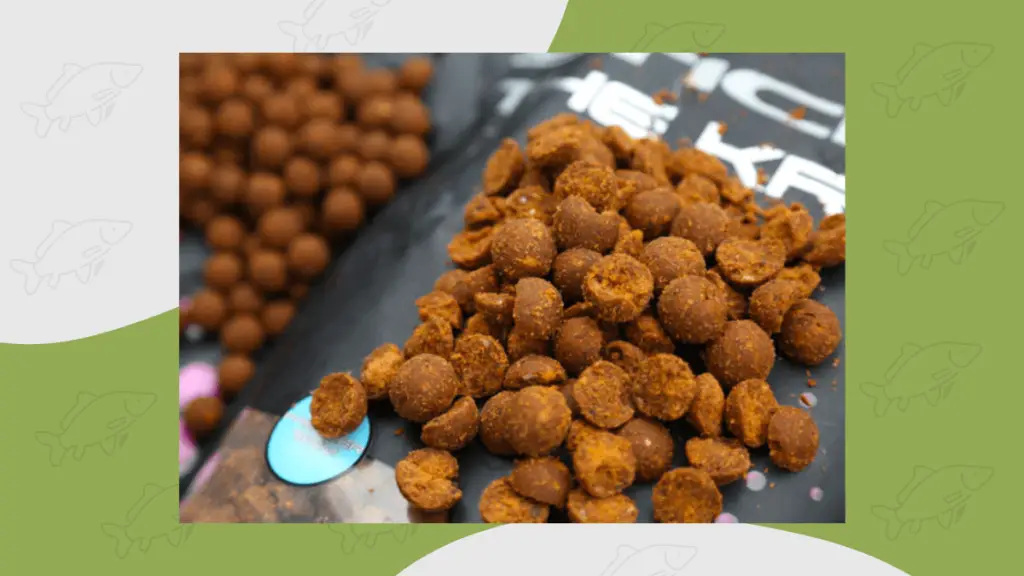
Some fishery owners even feed their lakes with medicated boilies, specifically designed to improve a carps digestive system and relieve them of parasites.
Pellets
Carp pellets are very similar to boilies in their makeup. Whilst they can vary from brand to brand, they are typically made up of ingredients such as fishmeal, wheat, soya, vitamins, amino acids, protein, nutrients and fish oils.
They break down well, and are very easily digestible to carp. In today’s world of hard-rearing carp for stocking purposes, pellets provide an excellent cost-effective food source. Carp are able to pack weight on fast and quickly become hooked on them.

It’s always worth adding some to your mix if you’re fishing a venue with relatively young carp.
How Carp Feed
When it comes to their feeding habits, carps utilise the buccopharyngeal cavity, lumps of tissue at the back of their mouth, to filter edible particles from the non-edible ones. The non-edible particles are then expelled through the opercular slits, or part of the gills in simpler terms.
If you’ve ever watched the Korda Underwater videos, you’ll notice just how much rubbish carp suck into their mouth. In a matter of seconds they are able to filter the inedible particles from the bait or natural foods that they are trying to feed on.

It’s one of the reasons why solid PVA bags work really well. Carp essentially come along and suck in the whole load of pellets, getting hooked in the process.
The evolution of wafters as hookbaits was also as a result of watching carp feed. Large carp can often be seen sucking an inch or two off the bottom, at which point a semi-buoyant hook bait is able to fly into the carps mouth much easier than a heavy bottom bait. – At least that’s the idea anyway!
Seasonal Diet Changes
Carp prefer water bodies that offer good oxygen levels, moderate water temperature, shelter, and abundant food sources. Keep in mind that weather conditions can affect these factors and influence their feeding behaviour.
As anglers, we’re no stranger to seasonal changes. Carp are generally harder to catch as the weather gets colder, but they can also be tricky to catch in the summer, especially on the warmest of days as they soak up the sun.
It’s essential to understand these feeding behaviours when fishing for carp, as knowing their preferred diet and feeding times can lead to a more successful sessions. These factors can vary from venue to venue too. I don’t know about you, but I feel much more in tune with my local venues that I fish every week vs. those that I fish every now and then.
To some extent I can almost look at the weather for the week ahead and plan a session for a short weather window when I know that the carp will most likely be feeding.
Spring/Summer
During the spring months, carp are more likely to be found feeding on aquatic insects, larvae, and vegetation as they emerge from their overwintering state. The warmer weather encourages the growth of plants and the hatching of insects, providing carp with an abundant food supply.
It’s the perfect time for them to recover their energy after the colder months and prepare for the spawning season.
The summer months see the carp becoming more active. With the temperatures rising, their metabolism increases, leading to a higher demand for food. At this time, carp will still consume insects, but they’ll also add fruits, seeds, and small fish to their diet.
As algae growth flourishes during this season, carp play a vital role in maintaining the balance of the ecosystem by consuming large quantities of algae and other aquatic plants.
From a fishing perspective, I’ve found that spring and summer are the seasons when carp can often be found gauging on naturals. If your venue is weedy and rich with natural food sources, it can often be tricky to get a bite fishing over pellet and boilie.
Autumn/Winter
In autumn, carp will focus their attention on consuming energy-rich food items with a view to getting ready for the cold winter ahead. As temperatures begin to drop, carp will instinctively seek out these nutrient-dense foods to build their fat stores in preparation for the upcoming winter months.
This, in my experience, is the perfect opportunity to go big on boilies. Carp will often seek them out and eat lots of boilies throughout Autumn as they are protein-packed.
As we hit the deepest of the winter months, the feeding habits of carp slow down significantly as their metabolism decreases with the falling temperatures. While their activity levels drop and they may not feed as frequently, they can still be found seeking out naturally occurring food sources like insects and larvae in silty areas or near dying weed beds, where the water may be slightly warmer.
About the writer
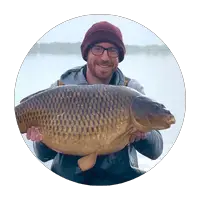
Rob W
I’m Rob, Carp Squad’s main contributor. I’ve been carp fishing on and off for 15 years, but the bug is well and truly back at the moment. Hopefully the articles I write on here help you put more carp on the bank.

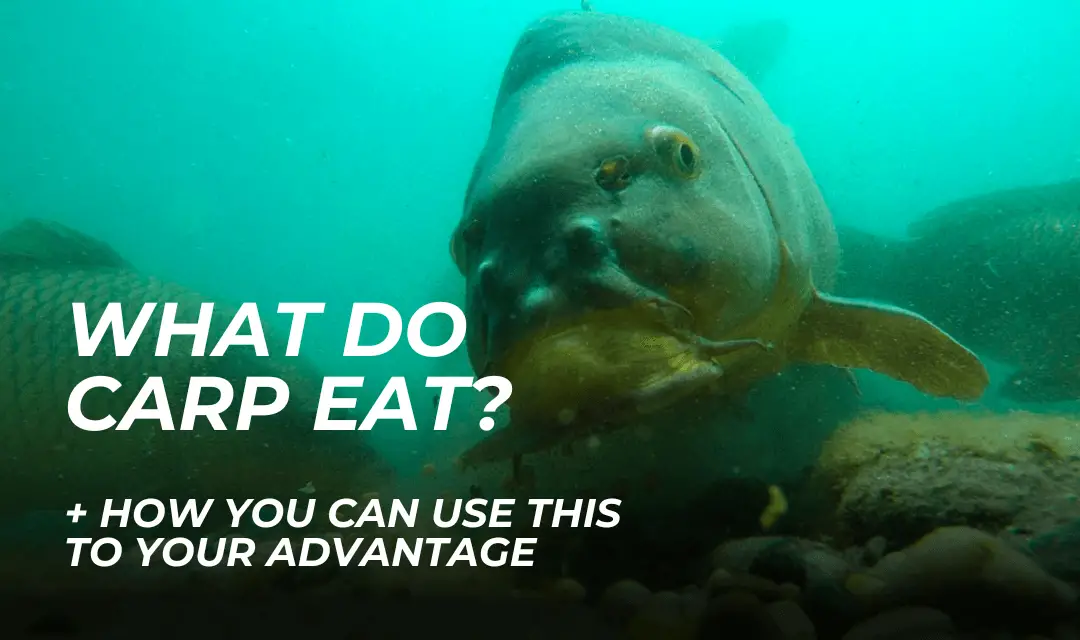
![Stocks Lake Norton Disney [Tips & Tactics]](https://carpsquad.com/wp-content/uploads/2023/11/stocks-lake-norton-disney-2-1.png)
